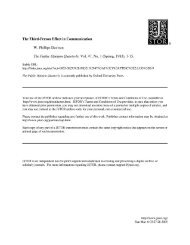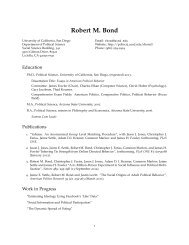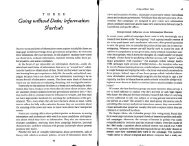Chapter 6 Why Authoritarian Parties? The Regime Party as an ...
Chapter 6 Why Authoritarian Parties? The Regime Party as an ...
Chapter 6 Why Authoritarian Parties? The Regime Party as an ...
You also want an ePaper? Increase the reach of your titles
YUMPU automatically turns print PDFs into web optimized ePapers that Google loves.
CHAPTER 6<br />
– take adv<strong>an</strong>tage of natural career <strong>as</strong>pirations in order to create <strong>an</strong> enduring stake in the<br />
regime’s survival among the most productive <strong>an</strong>d ideologically agreeable segments of the<br />
population. This <strong>an</strong>alysis highlights the need to <strong>an</strong>alytically distinguish between cooptation<br />
via policies or tr<strong>an</strong>sfers, <strong>an</strong>d cooptation via the institution of the party. <strong>The</strong> adv<strong>an</strong>tages <strong>an</strong>d<br />
operation of the latter are intimately linked to specific org<strong>an</strong>izational features of authori-<br />
tari<strong>an</strong> parties. <strong>The</strong> simple formal models of party-b<strong>as</strong>ed cooptation in Section 6.1 help us<br />
examine the political mech<strong>an</strong>ism by which those org<strong>an</strong>izational features facilitate cooptation<br />
<strong>an</strong>d suggest that, rather th<strong>an</strong> “political exch<strong>an</strong>ge”, cooptation via authoritari<strong>an</strong> parties is<br />
better thought of <strong>as</strong> “sunk investment” on part of their members.<br />
Crucially, these models help us underst<strong>an</strong>d not only the potential of party-b<strong>as</strong>ed coop-<br />
tation but also its limits. We saw that cooptation via the institution of the party must be<br />
initiated by a signal of the regime’s strength, it requires the mainten<strong>an</strong>ce of a politically<br />
sensitive bal<strong>an</strong>ce between recruitment, promotion, <strong>an</strong>d retirement policies within the party,<br />
<strong>an</strong>d contributes to the regime’s resilience to challengers from the outside but not from the<br />
inside. <strong>The</strong> theoretical <strong>an</strong>alysis in this chapter h<strong>as</strong> so far focused on the first of the three<br />
questions that I <strong>as</strong>ked at the outset: How <strong>an</strong>d which org<strong>an</strong>izational features of authoritari<strong>an</strong><br />
parties contribute to authoritari<strong>an</strong> resilience? An explicit focus on both the potential of but<br />
also the limits to party-b<strong>as</strong>ed cooptation allows us to address the two remaining, affiliated<br />
questions.<br />
<strong>Why</strong> c<strong>an</strong>not dictators obtain the political benefits of party-b<strong>as</strong>ed cooptation <strong>an</strong>d control<br />
without the actual institution of the party? According to the arguments outlined above,<br />
the institution of the party provides the org<strong>an</strong>izational skeleton through which the regime<br />
jointly m<strong>an</strong>ages hierarchical <strong>as</strong>signment of service <strong>an</strong>d benefits, selective recruitment <strong>an</strong>d<br />
53











